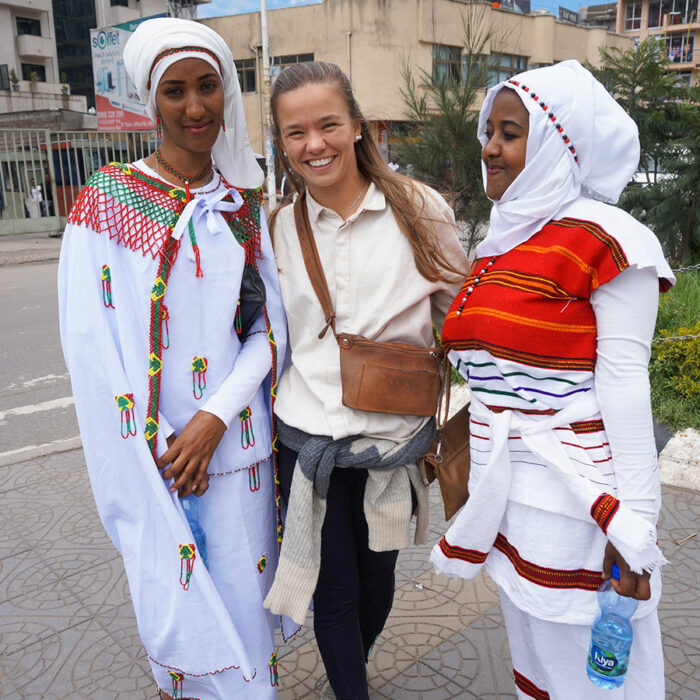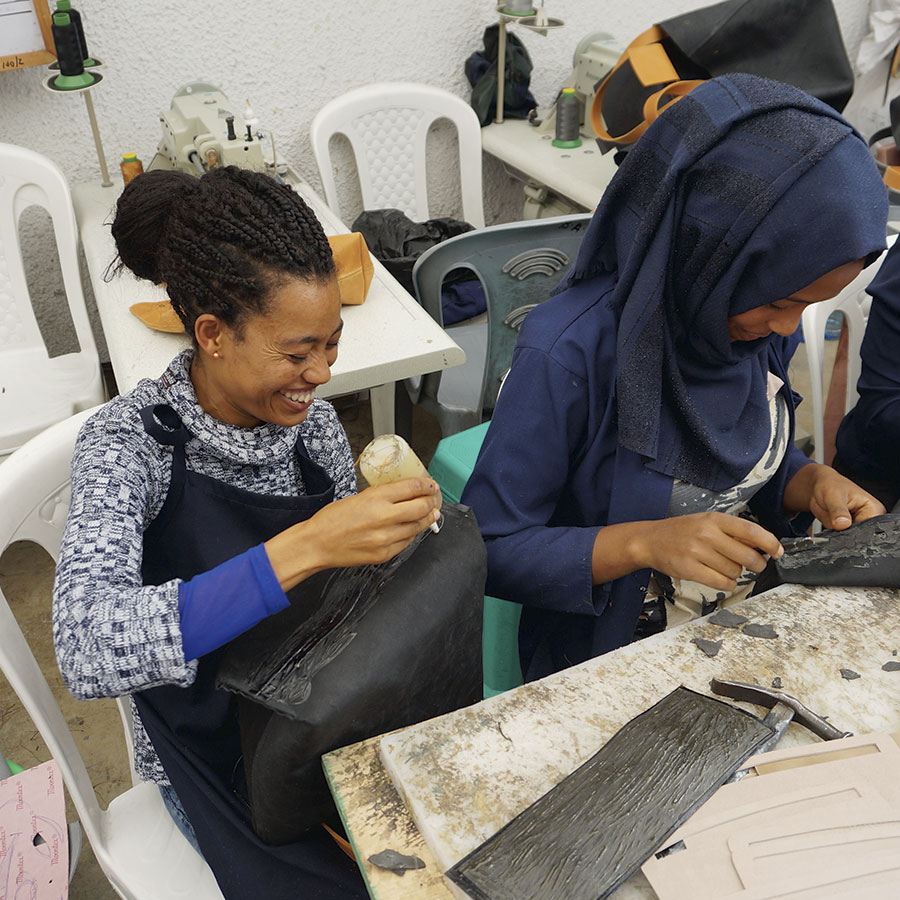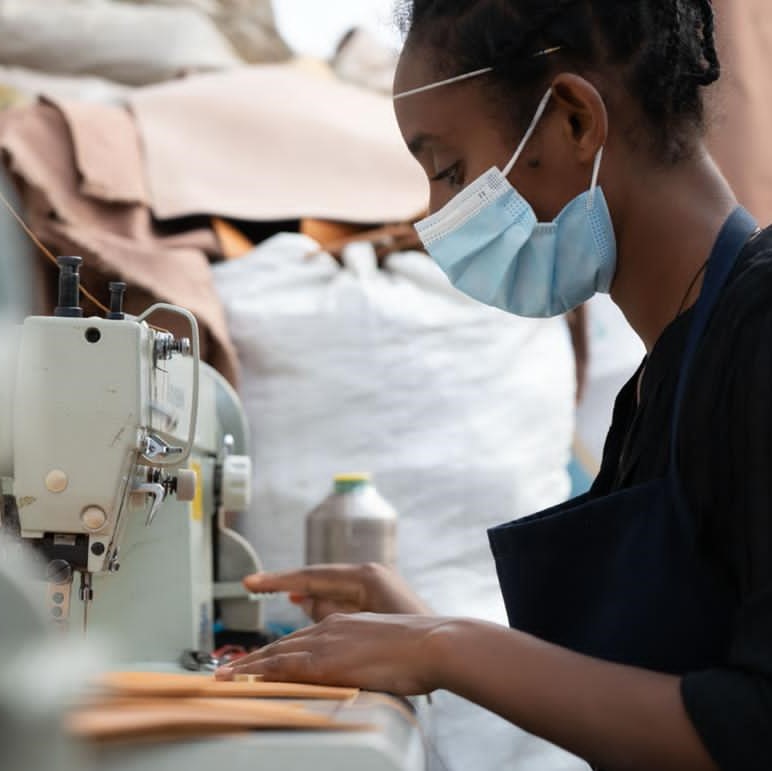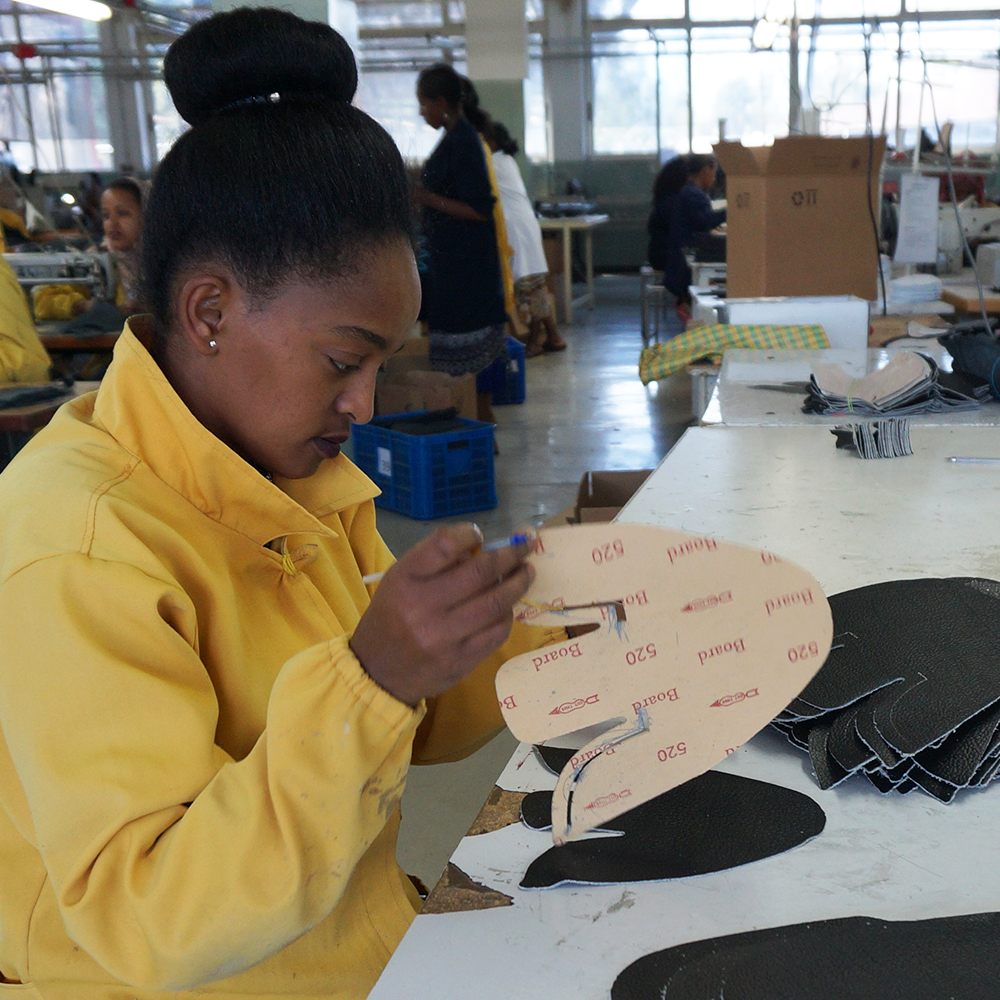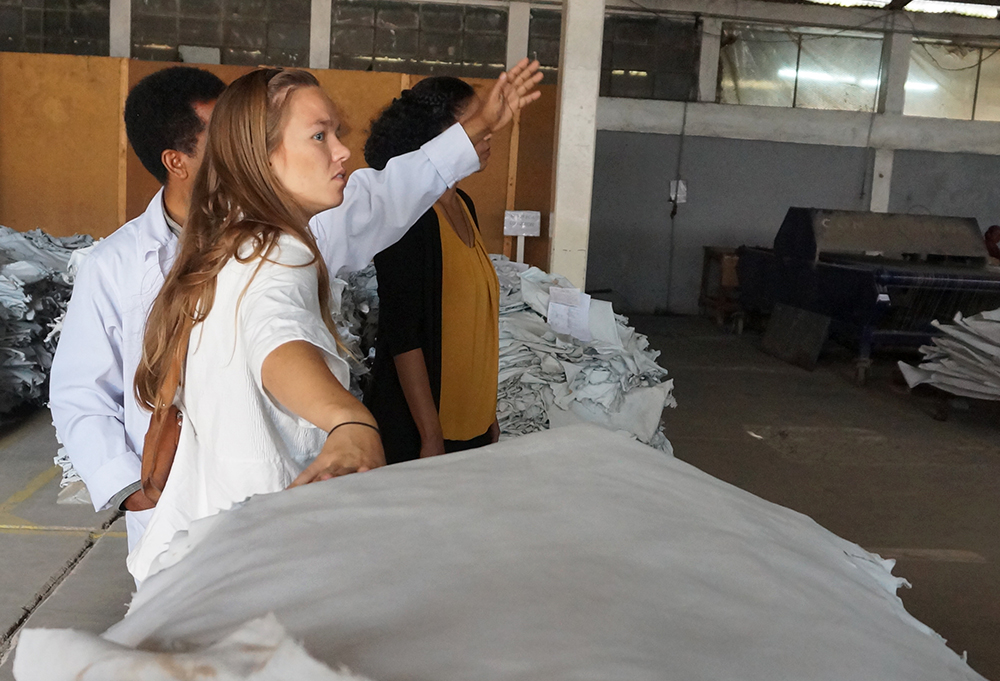COLLECTIONS FROM ETHIOPIA
When the choice fell on Ethiopia, I must admit that it was first and foremost a choice I made with my heart.
With the projects in Ethiopia, MicMic has the opportunity to make a small difference in a country characterized by imbalance and lack of education and work.
My parents have always appreciated going out into the world. After my brother and I had flown the nest, my parents continued their never-ending quest for new and exciting adventures. During a stay in Ethiopia, my father opened his eyes to the delicious leather that the capital Addis Ababa had to offer. Like any other explorer, he came home and passed on the information – lucky me.
Externally, the Ethiopian leather industry has gone silent with the doors - but in fact, Ethiopia possesses leather that competes with the highest quality worldwide.
Although leather is not new to Ethiopia, the country has not managed to achieve its full potential. For the same reason, you may not have heard of Ethiopian leather until now.
ABOUT
The progress in the country is great, but they are still struggling with a highly disorganized leather industry and not least infrastructure (or lack thereof). It complicates the procurement of leather, logistics is time consuming and not least increases export and import prices. Competitiveness is lost, and large international companies therefore often seek out more established countries such as China, Italy and Portugal.
Furthermore, the leather tanneries, factories and workshops move in an unstable environment, characterized by a lack of trained staff and large seasonal fluctuations. As leather in Ethiopia is exclusively a residual product, the quantities of leather increase during holidays and vacations, giving the tanneries an uncontrollably large profit that pushes prices to the bottom. On the contrary, outside the high seasons there is a great shortage of leather, which causes problems in obtaining the leather and results in sharp price increases.
Therefore, working with Ethiopia - yes - requires a lot of work, and not least a lot of patience.
Still, I could not stand this fine opportunity - and with the Ethiopian leather quality, I promise that the collections from Ethiopia are always worth a wait!
